If your once vibrant lawn now displays patchy, yellowing grass, you might be facing a grub invasion. These pesky larvae, the offspring of beetles, feed on the roots of grass, causing significant damage. Their life cycle typically begins in the spring, when adult beetles emerge from the soil to mate. Then, the females lay their eggs just beneath the surface of the lawn. The eggs hatch within a few weeks, releasing tiny grubs that start feeding on the roots of your grass. This feeding frenzy can last throughout the summer and into early fall, during which time the insects grow rapidly.
Once you have identified signs, you need to find ways to eliminate these grubs. This may include using pesticides designed specifically for grub control. The choice of products and their application varies, so it’s important to carefully read the manufacturer’s directions. In some cases, you may need to combine different methods for more effective control. This integrated approach can include both chemical treatments and biological practices. So, watch for these signs of a grub infestation and treat it quickly to bring your lawn back to good health.
You’ve probably already come across them
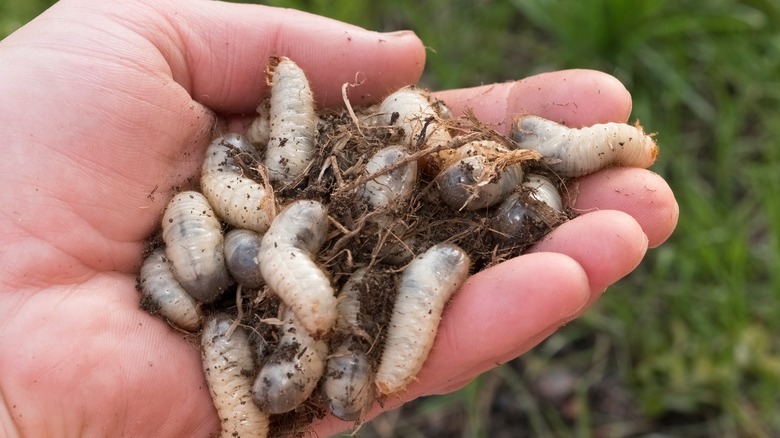
If you’ve already noticed small, C-shaped white larvae or irregularly shaped eggs in the soil, you likely have grubs. If you haven’t noticed these, start by checking for their presence as the first step. Select an area that shows signs of potential grub activity. Then, use a shovel to neatly cut out a small amount of your lawn. Extensive feeding by grubs compromises the root structure of the grass, making it easy to lift the turf, a possible indication of their activity. Flip over this section to inspect the underlying soil.
As you examine it, count the grubs you find in a square foot. The experts at The Clemson Cooperative Extension recommend beginning treatment if you see four or five insects. You should also pay attention to the condition of the soil and roots. Grubs tend to create distinctive tunnels, affecting your turf’s root system. They can also leave behind a trail of granular waste, which is their excrement, often referred to as “frass.” These subtle signs can help confirm a grub infestation even when the larvae are not immediately visible.
Your lawn is showing signs of drought stress
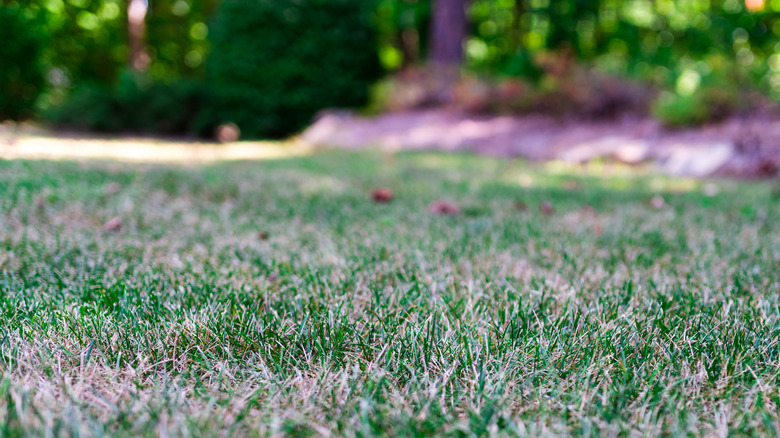
Drought stress in lawns significantly weakens grass due to factors like low rainfall. The University of Michigan has confirmed a correlation between fall drought conditions and increased grub damage. Lawns are less likely to show visible damage when rainfall levels are higher. However, environmental stressors can exacerbate the vulnerability of your lawn to grubs. During a drought, grass loses its protective mechanisms, making it more susceptible. As a result, the roots become weaker and are unable to regenerate quickly enough.
Grubs exacerbate drought stress in several ways. By feeding on the roots, they reduce the grass’s ability to absorb water and nutrients, which is critical during dry conditions. This leads to a weakened lawn that’s less able to cope with the poor conditions. However, ones that are well-irrigated and properly maintained are less likely to experience this stress. When treating a lawn during a drought, regular watering, especially during dry spells, helps maintain a robust root system. However, it’s important to balance irrigation. Over-watering can also create favorable conditions for grub development.
Your lawn is attracting raccoons and skunks
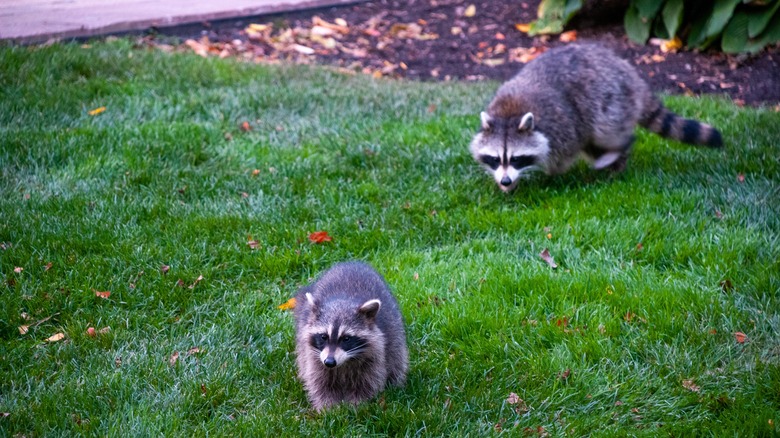
EGT-1/Shutterstock
If your lawn starts attracting an unusual number of raccoons and skunks, it could be telling you that you have grubs. These animals are drawn to the larvae as a food source, and their keen sense of smell helps them find them in the soil. While some level of wildlife interest is normal, a significant increase in digging activity can point to a substantial grub population.
In their quest for food, skunks and raccoons create unsightly holes in the turf and disrupt the uniformity of your lawn. This not only damages the grass directly but can also lead to secondary issues. The nocturnal nature of these animals means that this soil disruption usually takes place within a short time during the night. You might go to bed with a seemingly intact lawn and wake up to find it filled with holes. The best way to get rid of skunks and raccoons is to eliminate their source of food — the grubs.
You’ve noticed increased bird activity
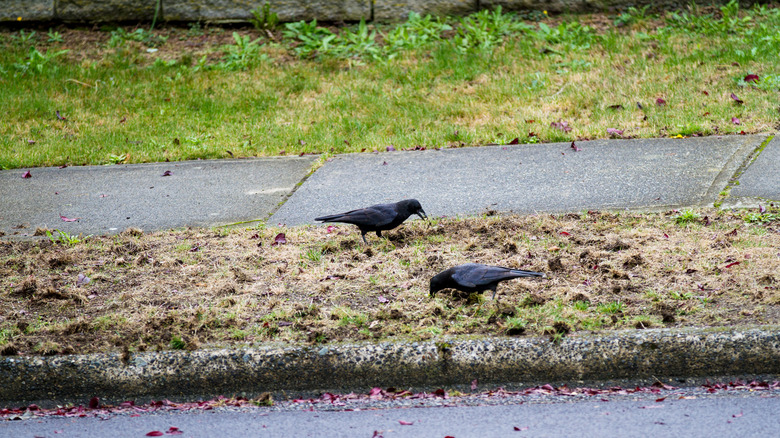
Karynf/Shutterstock
Birds, such as crows and magpies, are known to eat insects. Other species, such as robins and starlings, are also known for their bug-eating habits, often pecking at larvae. If these feathered friends frequent your lawn, it may be because they’re feeding on grubs beneath your lawn’s surface. However, a sudden influx of these birds can indicate a large grub population.
While bird activity is a natural and environmentally friendly way to control grub populations, the downside is the potential damage to your lawn. Frequent pecking can stress the grass, especially in areas with a high concentration of bird activity. Even though these holes are smaller and not typically as deep as raccoon or skunk ones, they can still be numerous. Some areas may have even more significant damage, with grass being completely torn up, exposing the soil. These holes may also lead to other issues like water pooling, which can stress the lawn further.
You’ve noticed irregularly shaped brown or yellow patches
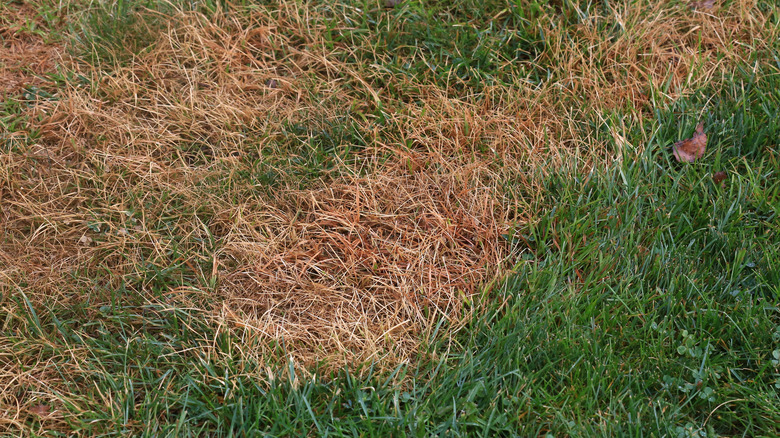
Douglas Sacha/Shutterstock
Irregularly shaped brown or yellow patches on your lawn are signs of potential grub activity. Their feeding damages roots, leading to browning as the grass struggles to access water and nutrients. That being said, while the insects are a common culprit, they are not the only cause of lawn discoloration.
Fungal diseases, drought stress, a lack of nitrogen, poor lawn health, or even damage from chemicals or pet urine can cause discoloration. Therefore, it’s important to consider other factors before treating for grubs. Maybe your lawn has always been healthy and started to exhibit these symptoms out of nowhere. If they’re present along with other signs, like increased animal visits, it could be experiencing a grub problem. But, your lawn might already be struggling with issues like poor watering and or disease. Then, the discoloration might be related to these factors rather than grub activity. In these cases, addressing the underlying care concerns is crucial.
Your turf is thining, wilted, peeling and becoming increasingly spongy
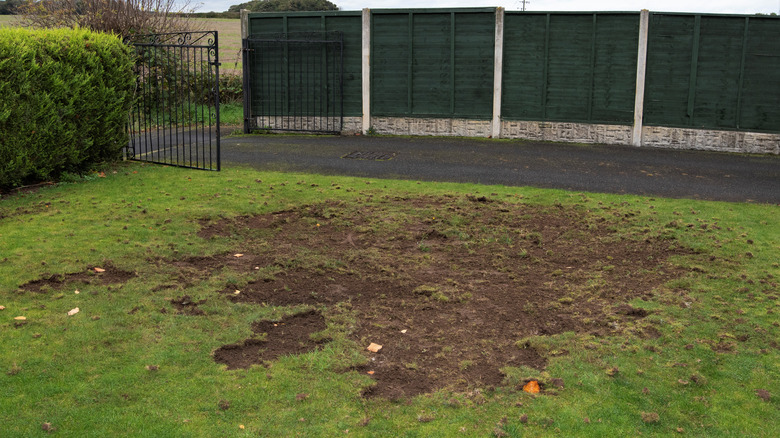
Peter is Shaw 1991/Shutterstock
When turf becomes spongy or starts peeling away easily from the soil, grub activity is often a primary suspect. This damage occurs as the insects attack the roots, which anchor and support the grass. As these roots are compromised, the turf’s attachment to the soil weakens, leading to the peeling effect.
The spongy texture of the lawn also arises from the diminished density and strength in the soil structure. As grubs consume the roots, the integrity of the soil is compromised, resulting in a softer and more compressible layer. Additionally, the thinning of the grass is another result of damaged roots that are unable to uptake water and essential nutrients. This leads to a lawn that appears less vibrant and healthy. While grubs are a common cause of these symptoms, it’s important to note that other issues can lead to similar effects. For instance, a lawn that has too much thatch might develop a spongy texture.
There is increased weed presence
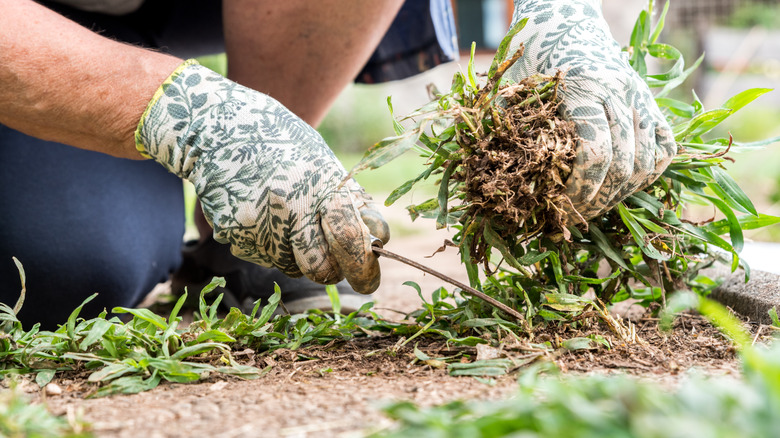
Hmvart/Getty Images
When grubs damage the roots of grass, they create gaps in the turf. Weeds, with their rapid germination rates and aggressive growth, can quickly fill these empty spaces. Plus, they can compound the problems already caused by grubs with their opportunistic growth patterns and survival techniques. Many weed species are highly adaptable and can thrive in less-than-ideal conditions, so they’ll take advantage of an already-vulnerable lawn.
Many types have extensive root systems that can be far-reaching and deep, making them difficult to eradicate. For example, dandelions have long taproots that anchor them firmly in the soil, while clover can spread quickly with its creeping stems. These root systems also allow them to efficiently access water and nutrients, often at the expense of nearby grass. They can also provide a habitat for pests and diseases, increasing the likelihood of further lawn problems. So, it’s essential to treat any weeds early with a lawn-friendly herbicide to prevent further damage.
Treating a grub worm infestation on your lawn
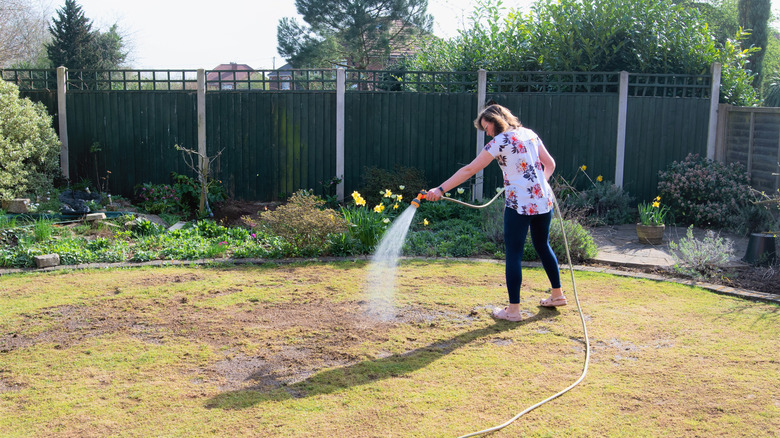
Peter is Shaw 1991/Shutterstock
One of the most common methods for treating a grub infestation is the application of insecticides. And, there are two main types: curative and preventive. Curative insecticides are designed to provide quick, immediate control of grubs. However, their window of effectiveness is relatively short, and they may need to be reapplied if infestations persist. Preventive insecticides, on the other hand, have a longer-lasting effect and prevent grub larvae from developing. With either one, you should always follow the manufacturer’s instructions and, if needed, seek advice from local pest control services.
Apart from chemical treatments, you can introduce natural predators like nematodes (microscopic worms that feed on grubs) as a biological control method. Another option is the use of milky spores, which are naturally occurring bacteria. When applied to the lawn, the grubs feeding on the grass roots ingest the powder. Then, they die within a few weeks, releasing more spores into the soil and perpetuating the cycle.



